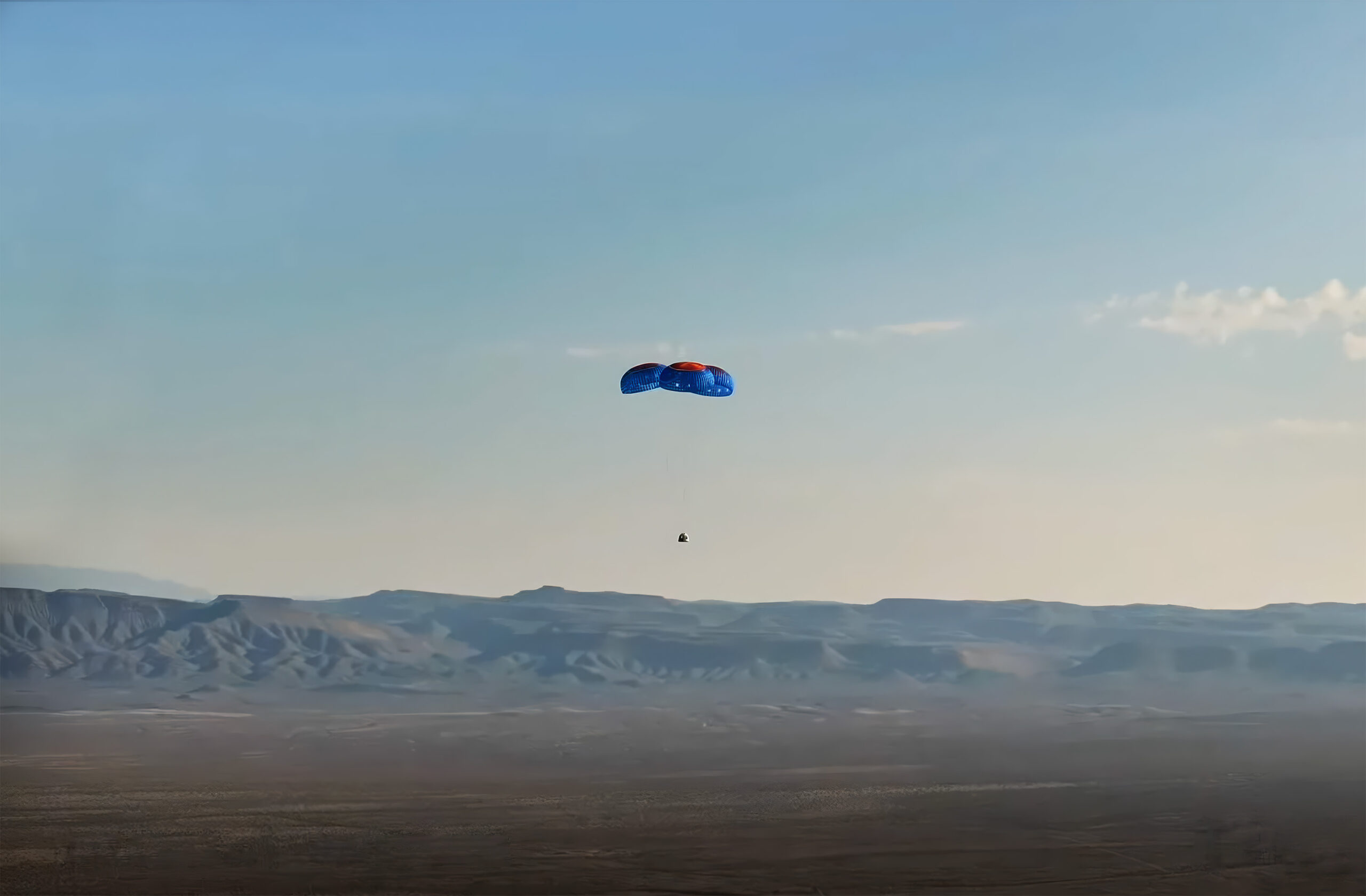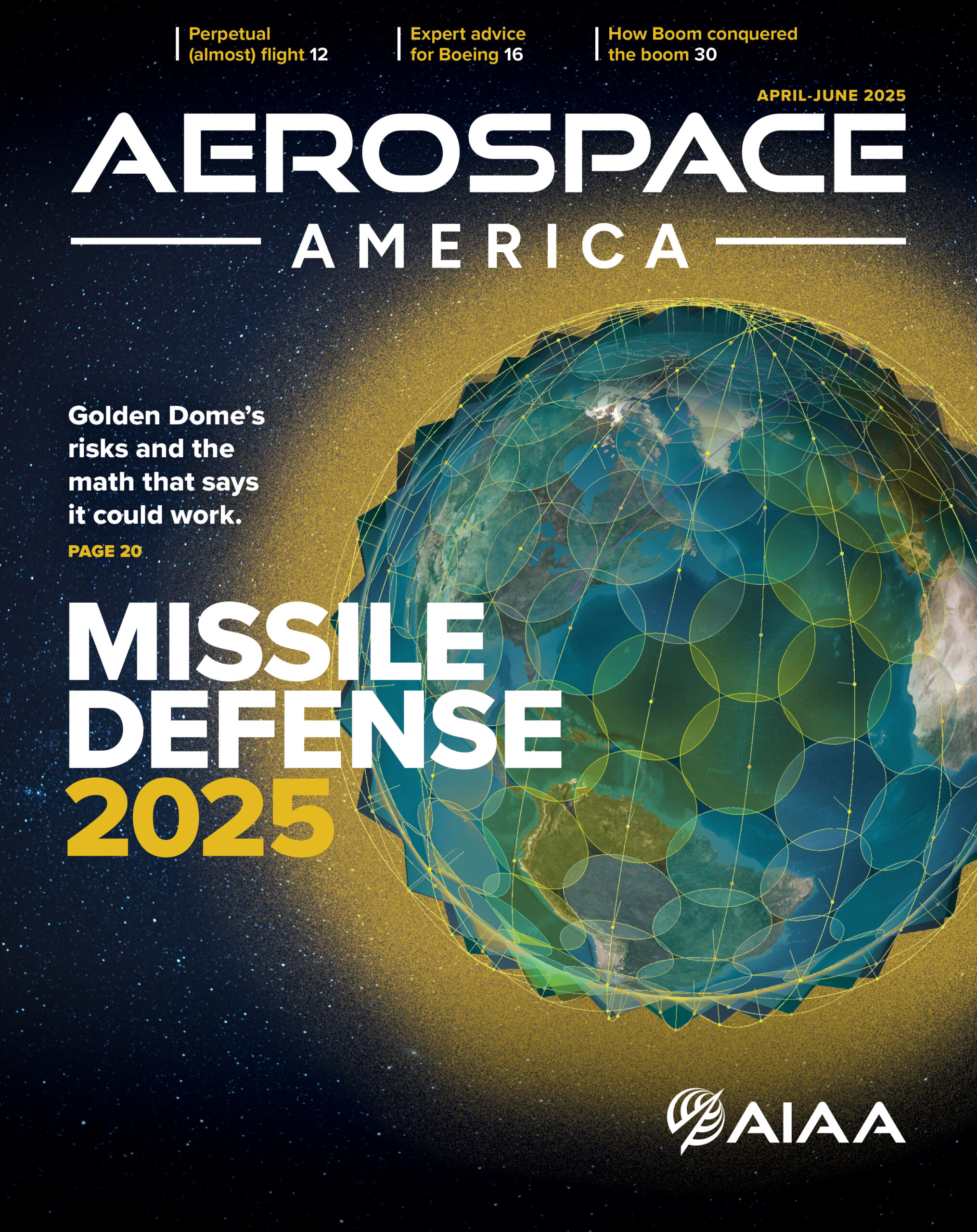On 31 May 2025, Blue Origin completed its 12th human spaceflight and the 32nd flight for the New Shepard program. The crew included middle and high school teacher, and AIAA Educator Associate Member, Aymette “Amy” Medina Jorge from Odyssey Academy in Galveston, Texas. Born in Puerto Rico, Amy is passionate about boosting Hispanic representation in STEM fields. She is a recipient of the 2023 AIAA and Challenger Center Trailblazing STEM Educator Award. Amy’s Blue Origin seat was sponsored by the Mexico-based company Farmacias Similares, which sells affordable generic medications throughout Mexico and Latin America.
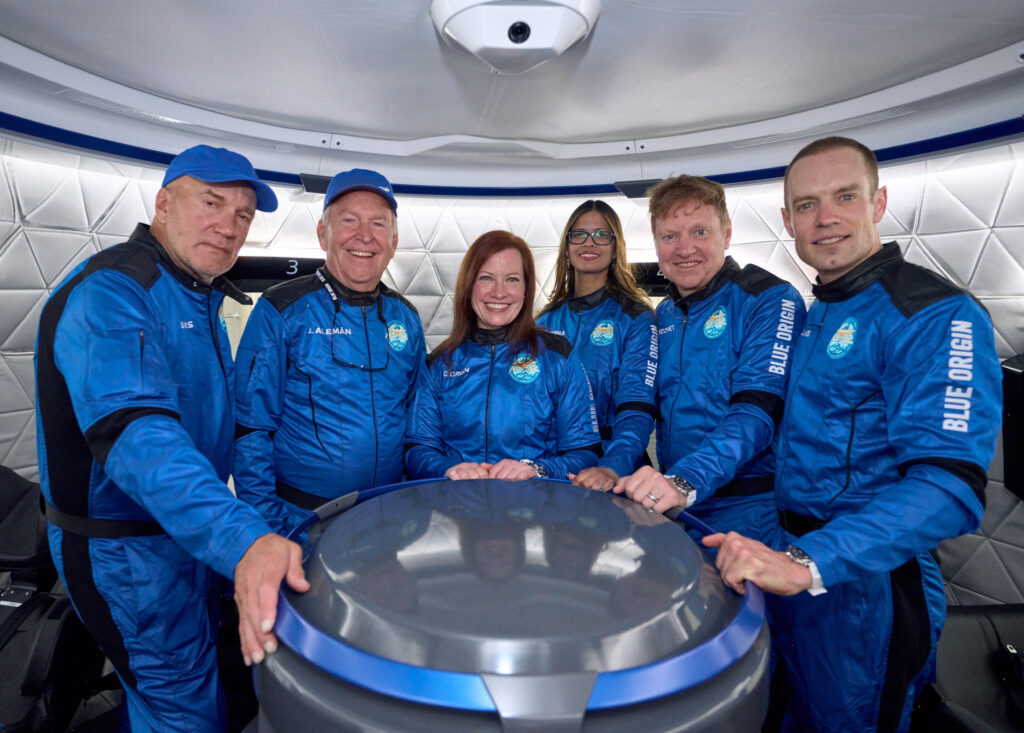
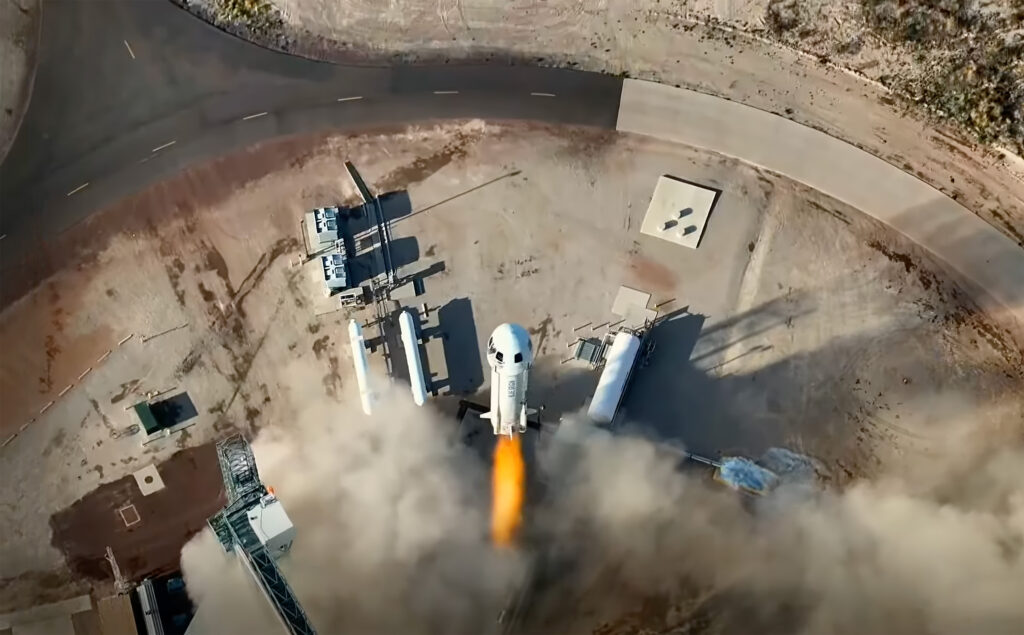
Before NS-32 Amy led more than 60 space experiments and zero-gravity projects, including flying biometric sensors developed by her students and performing in-flight 3D printing as part of a May 2025 parabolic Zero-G flight.
Amy sat down with AIAA staff to discuss her experience and how the opportunity came to be a reality. [This interview has been edited for length and clarity.]
Jake Williams (JW), Senior Manager of K-12 and Young Professional Programs at AIAA:
What was your relationship to STEM and aerospace when you were growing up?
Aymette Medina Jorge (AMJ): I didn’t have the opportunity to take classes related to aerospace when I was in high school. So for me as a teacher now, it is important to introduce and spark the next generation. It’s our collective responsibility to provide students with opportunities and resources so they can envision themselves in STEM careers. There’s a gap and if students are not exposed through activities in the classroom, and if the teachers are not offered the training and professional development they need, the gap will get bigger instead of closing.
People need to realize we are living in a space revolution. Like the Industrial Revolution before. These new companies are taking the lead to innovate. It’s our time to adapt to the changes and move forward into the future. We need teachers more involved in these kinds of activities to provoke that change in the minds of the kiddos.
JW: When did you know that you wanted to be an educator?
AMJ: I knew I wanted to be a teacher since I was a little kid. I had the best teacher at home, my mom. She taught me with patience and love. And then when I went to school, I had incredible teachers who made a positive impact. One teacher specifically, Miss Rodriguez, passed along to me her love for science. She taught about the wonders of the universe and our planet. I remember after her class I went home, and I put my dolls all over my bed and used my closet door as the whiteboard. And I taught my dolls the same way Miss Rodriguez taught me.
When I was a little older, I became aware of Christa McAuliffe – she had just been selected to fly to space. I knew I wanted to be a teacher and now I had this superwoman to inspire me. The fact that she was a teacher, but she was also going to be an astronaut and go to space – the merging of those two things was wonderful and inspiring to me.
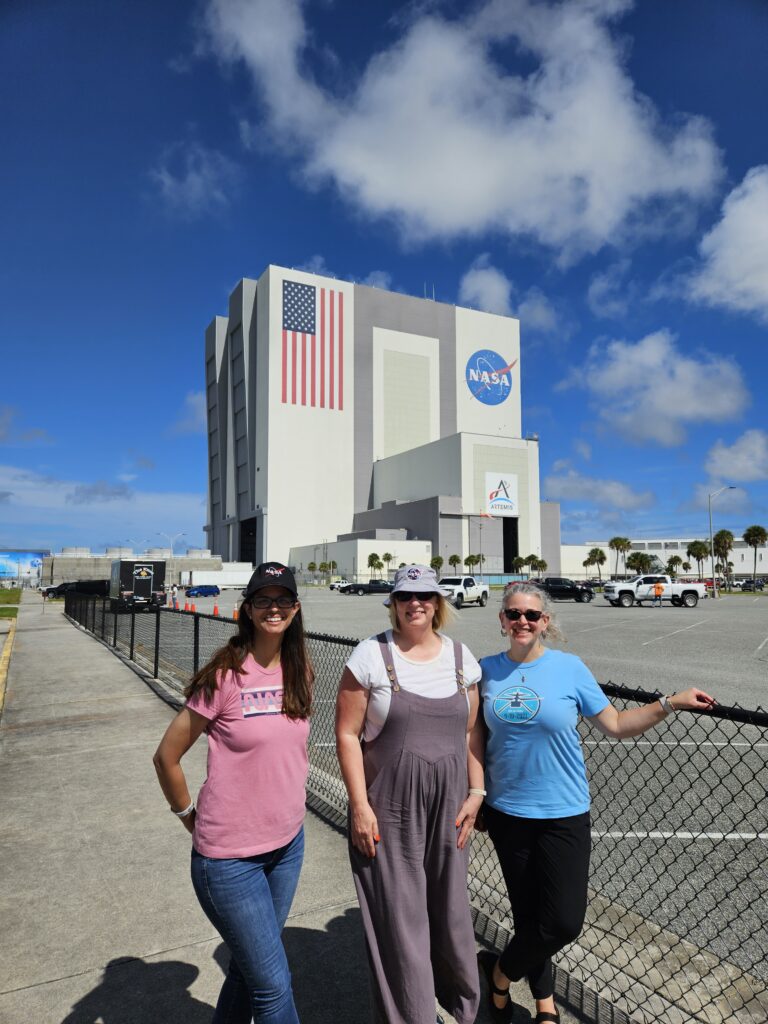
JW: How did the opportunity to be an astronaut on Blue Origin’s NS-32 come about?
AMJ: AIAA and Challenger Center had a lot to do with it. Back in 2023 I was one of the recipients of the Trailblazing STEM Educator Award. The award included an opportunity to travel to Kennedy Space Center to see a launch and get a tour of the Blue Origin rocket factory. I met Gwen Griffin [Executive Director of Blue Origin’s Club for the Future] – that was phenomenal. She connected me with the right people at Blue to make it happen after I had talked with Farmacias Similares about sponsoring me.
JW: What did you do on the flight, and what did you bring with you?
AMJ: When people see the footage from the NS-32 flight, they ask, “Why aren’t you floating more?” It’s because I had a duty. When you are in this kind of mission and you have not just your students but also a sponsor, you have to first fulfill your duty. Then, if you have time, you can enjoy yourself. In my case, first I was doing science; I was running experiments inside the capsule. I was very careful to protect that.
One of the experiments involved an SD card and seeing any change in the data. I also was running an experiment on my heart rate variability using a biometric device. This experiment was the second part of another experiment to compare my heart rate during a parabolic flight, which I had done earlier in May.
Then later, while weightless, I released my flags. Flags are important. They identify us. And I was so grateful to Mexico because thanks to Mexico you have the first Hispanic female teacher in space and you have the first teacher flying in a commercial vehicle, opening doors for others and opening the eyes for our kiddos. So I flew the Mexican flag. And I flew the flag of Puerto Rico and of my hometown, Ponce.
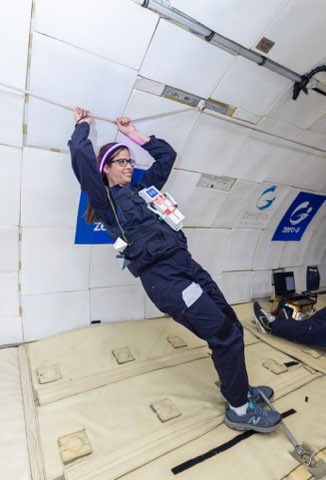
Then I remained unbuckled a bit longer because I needed to collect the biometric data. I moved my body in certain motions that had been planned with the students – the same movements that I did on the parabolic flight – so they could collect the data for comparison. Unfortunately, I didn’t have enough time to do a flip, which was the last thing on my list. But I got to do all the other planned movements for the experiment.
There is value in this flight for me personally because it’s not just space tourism. For me it is this amazing opportunity to do science for kids and to inspire them to continue testing technology and to continue studying engineering and math. When that biometric data comes in, those are real numbers that they can do something with. It’s not abstract. We can say, “Hey, we should improve this thing or this part, so future astronauts can get a better experience when they are floating or when they’re in the capsule.”
JW: You mentioned the flags you brought with you. As you left the capsule, you were carrying the flag of Puerto Rico. Could you share the significance of that for you?
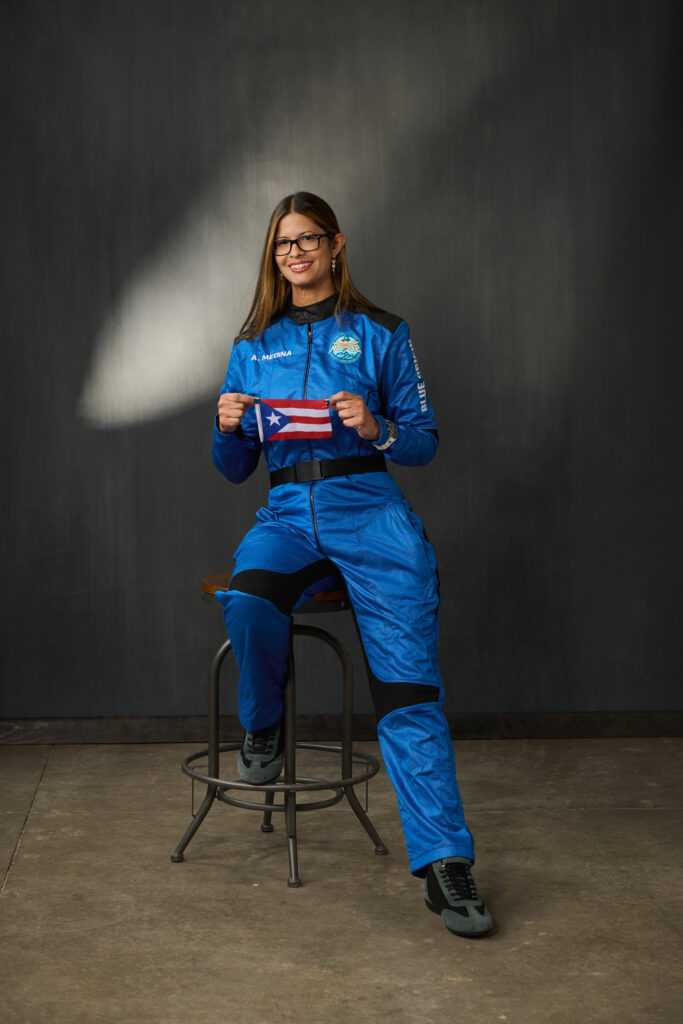
AMJ: One of the things that makes this mission so powerful is we were putting the first female Hispanic teacher in space. And with that you’re opening the doors for the Latin American community. Puerto Rico is this hybrid creature. We are U.S. citizens by birth, by law. And we are also part of our Latin community because we speak Spanish. We are Hispanic. For me, as a Puerto Rican, it was important to have with me my people, my Puerto Rican people, inside the capsule and in that moment as I was exiting the capsule.
Having this flag gives a message to Puerto Rico and the Latin community. And I didn’t only fly the Puerto Rican flag. In my payload bag, there were all the flags from every single Latin American country, including the United States flag. Multiple U.S. flags because the place that unites us is here, the United States.
JW: Do you feel different after the experience?
AMJ: Physically no. It’s a marvelous rocket. Even when you are going up, they rotate the rocket very elegantly, so you can see the environment around you and you can admire the colors, how they are changing the tones of blue. You don’t feel sick.
It’s a marvelous piece of engineering. Afterward, when you’re out of the rocket, you have this adrenaline inside you; you want to share this with people, but you don’t feel physically different. Just different inside. Emotionally.
There is a change of perspective because when you are up there you see this infinite black. You don’t see the stars. What you see is this marvelous round planet. You see this halo of blue. I saw just how fragile our planet is. I felt, “Houston, we have a problem if we don’t take care of our planet.” This is our home. There’s nothing around. We are alone. We’re going to have a problem because we have nowhere to go, so we need to take care of the planet right now. Be more conscious about our home.
It’s important to join the inner and the outer space together. We do this by testing technologies and testing procedures. Doing experiments that can contribute and benefit Earth, not only for us as humans, but also for the health of our planet.
I flew seeds on this flight that were then distributed to schools. Now the kids can do experiments in their classrooms where they see what differences occur between the seeds that were in space compared with the seeds that stayed on Earth. It’s important to remove the disconnect that people think there is between careers related to space and work that benefits us here on Earth, not only for humans but also for the environment.
JW: What did your students think of you going to the Kármán line?
AMJ: They are so excited. Unfortunately, when we did this flight, they had just finished school. So I didn’t see most of my students after the flight. I’m eager and waiting for that moment in August when I return to school and see them all in the classroom. They were watching and so excited.
I had some students whose parents brought them to watch my launch in Van Horn, Texas. They really valued that experience: seeing the rocket going up and down, knowing that their teacher is there. That’s a powerful experience for a kid.
JW: In a previous interview, right after the mission, you mentioned that your next goal would be to go to the International Space Station. Why is that and what would you like to do there?
AMJ: I’m part of the ISS Mimic project that engages students in hands-on STEM learning by building scale models of the International Space Station that stream live telemetry and simulate real operations. Students develop skills in coding, CAD, 3D printing, and electronics, while educators access bilingual resources and lesson plans. Combining in-person and online tools, the program broadens access to STEM education, fosters critical thinking, and inspires interest in STEM careers. It’s such an incredible way to provoke that essential connection for students through different tools.
I would love to go to the ISS and do science. I just want to do science inside the station, and I would love that opportunity while it’s still possible. But if the station is retired before I’m able to, who knows? I would be happy to be one of the first ones working inside a new station.
JW: What role has AIAA played in your professional life?
AMJ: Teachers need to know about the great resources that AIAA has for them. Free lesson plans, professional development, grants – the grants provide funds directly into the classrooms for things like kits to build rockets or drones, and so much more. And then there’s the recognizing of teachers, which is an important part this profession.
It’s so valuable to be acknowledged for the work we do nurturing the next generation. Things like the Trailblazing STEM Educator Award have such an impact on us.
We are in the middle of a space revolution. There are a lot of companies, not only in the aerospace sector, but other companies that needs professionals in the STEM area. Where are those kids now? We have high schoolers who are the Artemis generation and middle schoolers who are probably the Mars generation in our classroom, but without the resources and the opportunities that AIAA provides, we can’t do much.
JW: Is there anything else that you want readers to know?
AMJ: The last thing I’ll say is a direct message to all the teachers and students: If you have a dream, transform it into a goal. With discipline and resilience, you can achieve that goal. You can make your dream a reality. I think people need to hear: Yes, you can do it.
Have faith and believe in yourself because you can do it. And say thank you to all the people who support you. For me, through all the years, that has included AIAA and Challenger Center, Blue Origin and Club for the Future, the ISS Mimic team, and, of course, my sponsor, Farmacias Similares. Thanks to all of them we have the first teacher flying in a commercial vehicle and actively bringing space into the classrooms for students.


